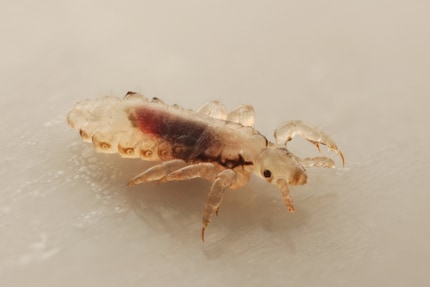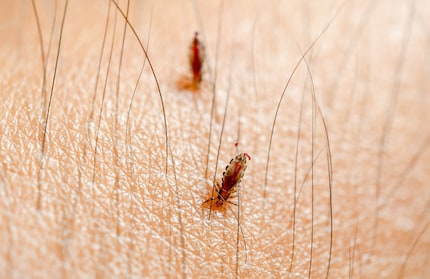
Background information
Beat it, nits! Tips from a head lice expert
by Katja Fischer

They are tiny, harmless, but an incredibly nasty nuisance: head lice. They often appear after the summer holidays, in late summer or early autumn - right now. Here are five things you probably didn't know about them. Attention, itching danger!
My head itches. And it has been for days. To be precise, since the day my daughter's school informed me of another lice infestation. While I was still reading the letter, the scratching reflex kicked in. And it won't stop. Even though I've checked my head thoroughly at least ten times since then.
No wonder, now I'm also dealing with the little beasts professionally. While writing this article and reading the interview with a louse expert, I find myself reaching for my scalp again and again. "Louse" has become an irritant. Literally.
Oh dear, now your head is itching too? Hopefully it's just a paranoid reflex. The critters are in high season again. However, it is not yet clear why the number of head lice reports increases after the summer holidays and no scientific research has been carried out. However, other facts are clear - here are five of them.
Head lice are tiny, two to three and a half millimetre long insects with six legs. At the ends of their legs are so-called clasping claws, with which they literally cling to the hair. Head lice are normally grey to transparent. However, if they have just sucked blood, they take on a reddish colour.

Head lice reproduce by laying their eggs directly at the hairline. The newly hatched young lice, known as nymphs, can feed directly on the scalp. It takes a few days before they are sexually mature. This is why the period between hatching and sexual maturity is used for the second lice treatment. The first treatment usually kills the lice, but not their stubborn eggs. You wait until the young lice hatch - and then eliminate them before they multiply.
About every five hours, a louse sucks on the scalp. It releases an anaesthetic substance with its saliva, which is why the person affected does not notice the bite at first. Only when the anaesthetic wears off is the itching noticeable. The head louse can only survive for around 24 to 55 hours without human blood. According to head louse.info, it then becomes senile and dies.

Objects play almost no role in transmission. Head lice are transmitted from head to head. This can happen anywhere: for example at school, on the train or in the theatre. They can neither fly nor jump, as is often assumed. They only move by crawling on their legs. But they do so relatively quickly: according to the German Medical Journal, they can travel up to 23 centimetres in one minute. The myth that pets transmit head lice is also not true. They are exclusively parasites of humans. This does not mean that dogs and cats cannot have lice. But they are other types of lice, for example hair lice.
In common parlance, no distinction is made between louse eggs and egg cases, both are nits. This is probably because the distinction is very difficult. Only experts would recognise whether it is a nit or an egg and whether the egg is alive, writes Lausinfo. Strictly speaking, however, there are differences: lice lay eggs from which the louse babies hatch. What remains are the egg cases, the nits.
So, are you still itching? It should subside soon, I promise. If not - and you actually notice a louse infestation - you'll find what you're looking for in our shop. With anti-lice products rated as very good by "K-Tipp":
Mom of Anna and Elsa, aperitif expert, group fitness fanatic, aspiring dancer and gossip lover. Often a multitasker and a person who wants it all, sometimes a chocolate chef and queen of the couch.
Interesting facts about products, behind-the-scenes looks at manufacturers and deep-dives on interesting people.
Show all